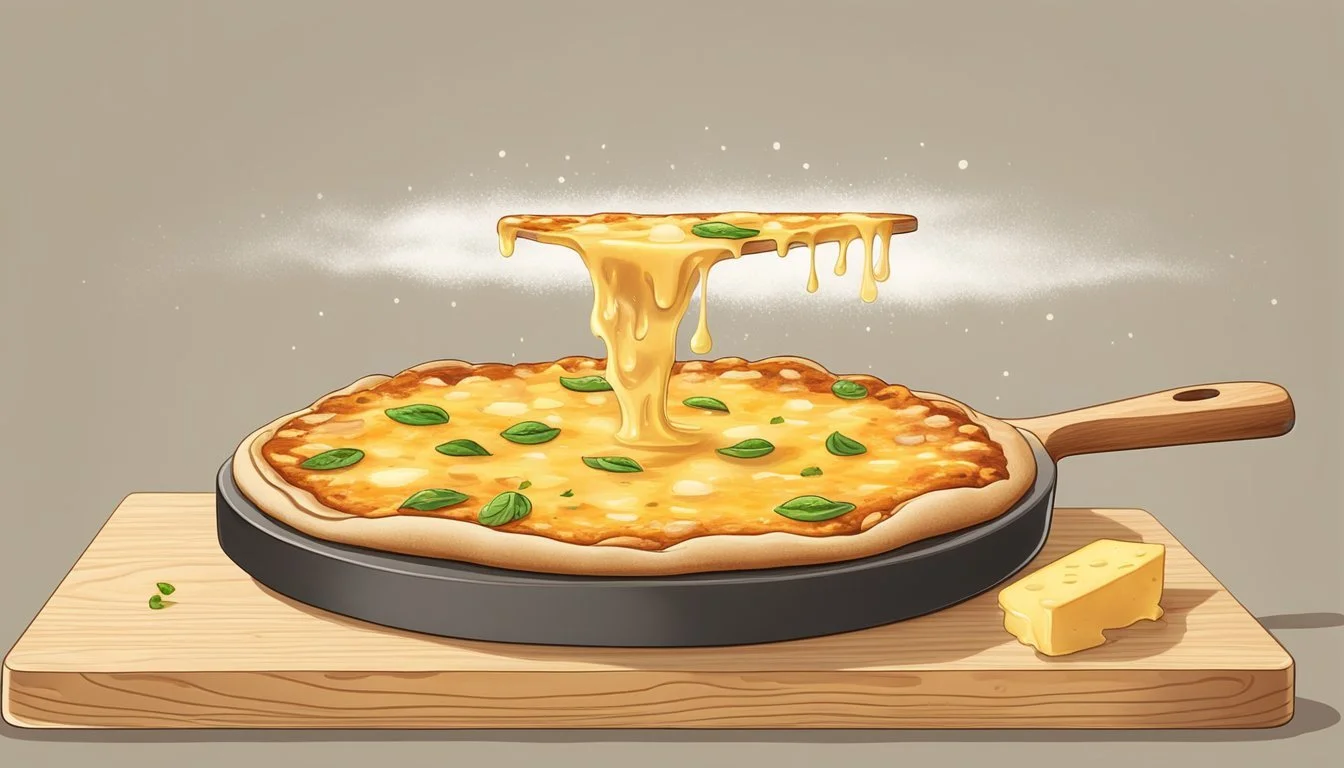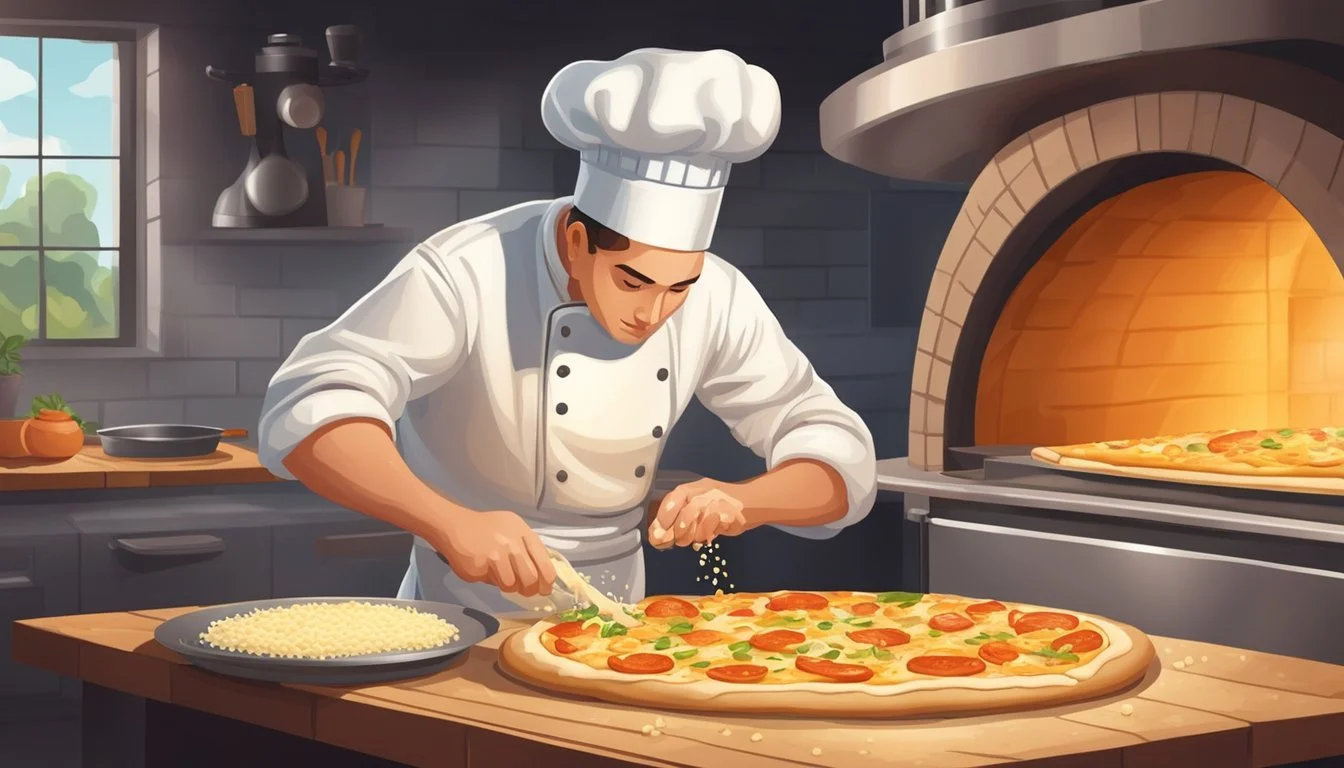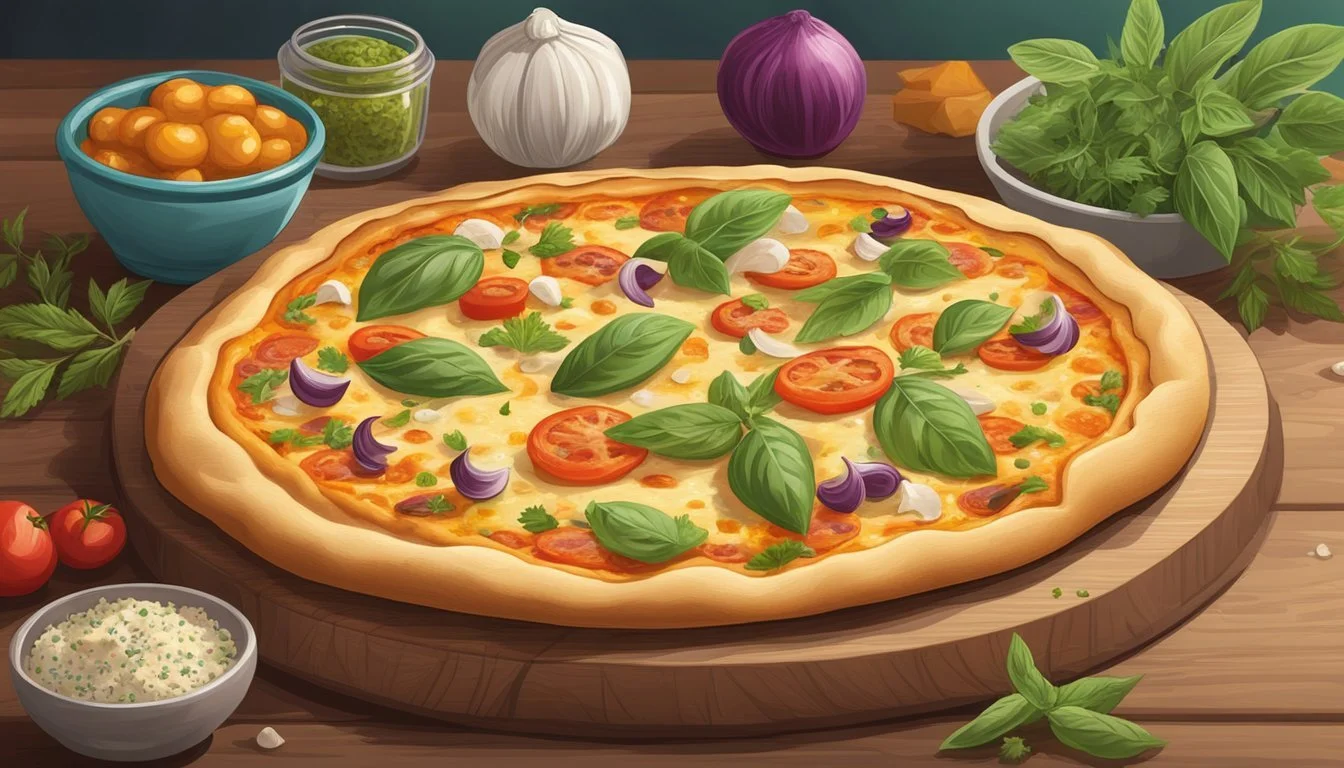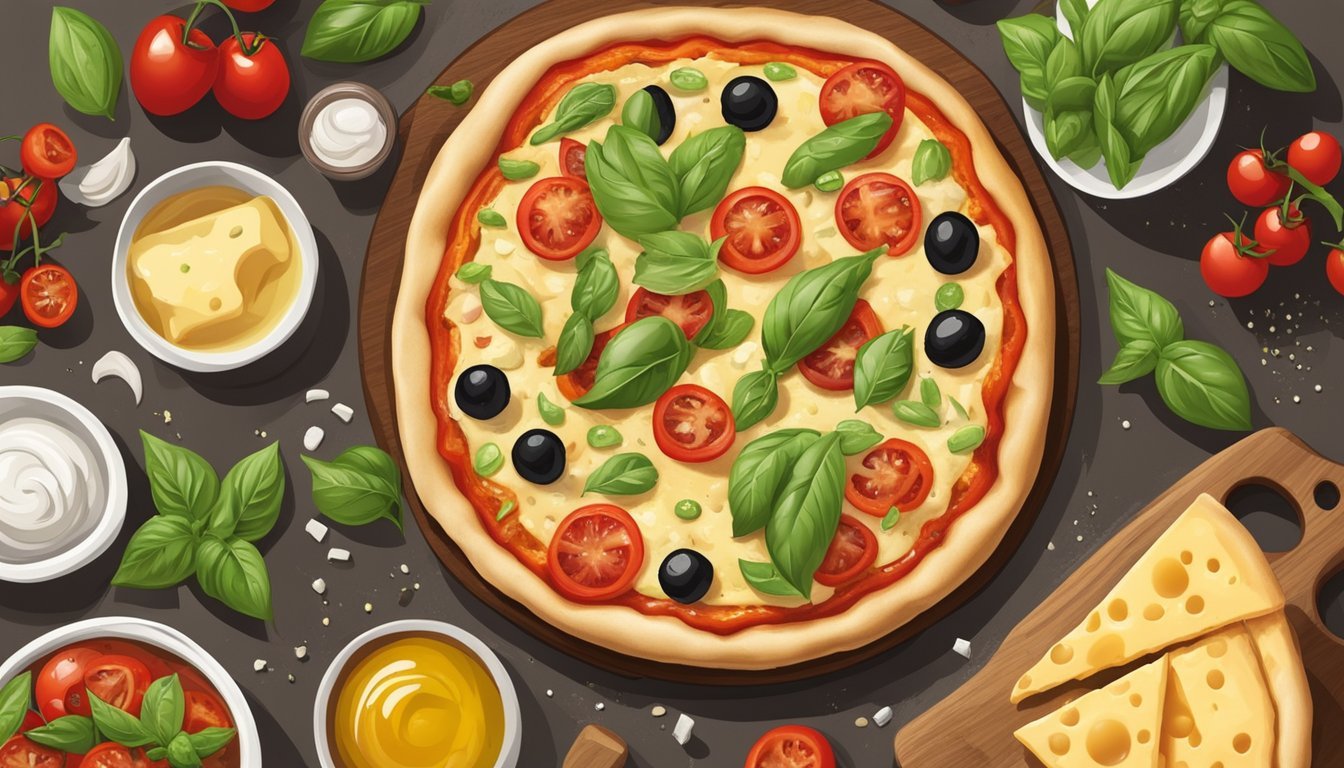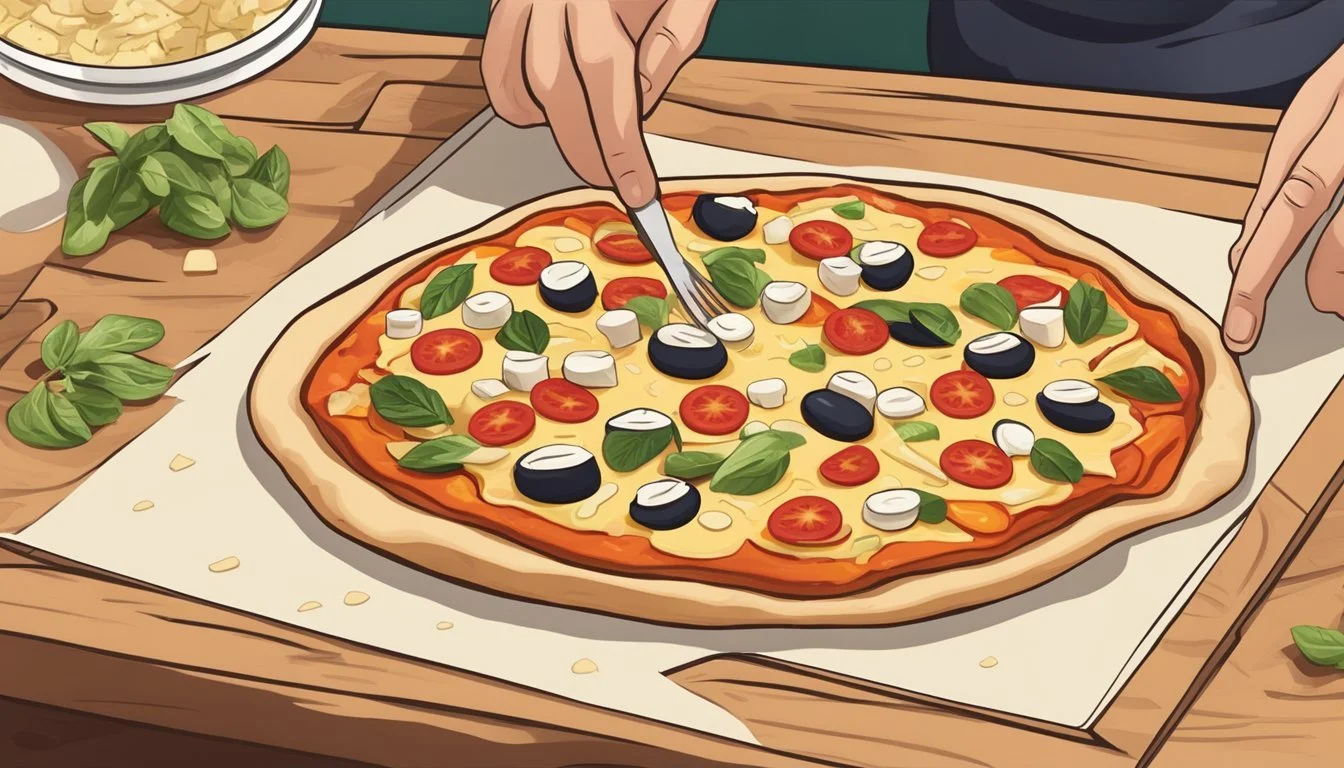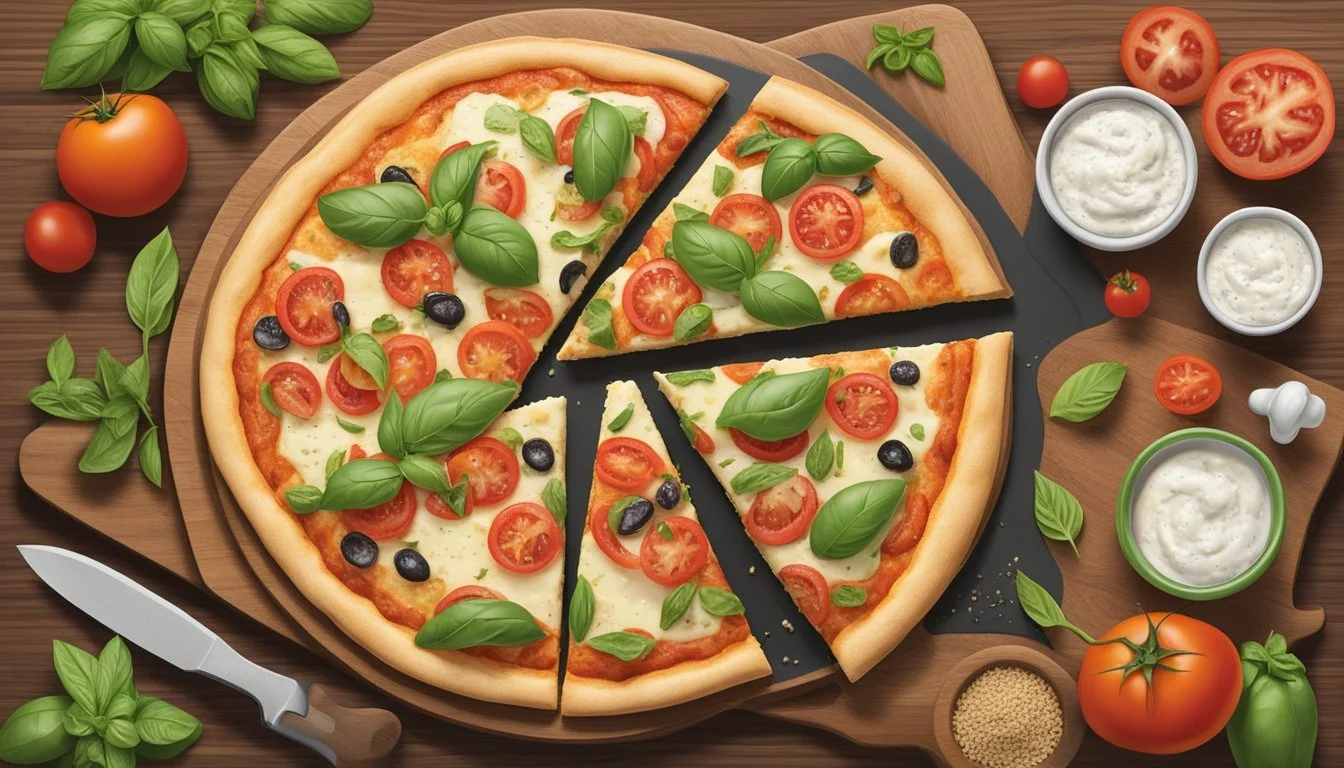How Long Does Flatbread Cheese Pizza Last?
Tips for Optimal Freshness
Pizza lovers often wonder how long flatbread cheese pizza lasts once it's been made. Typically, flatbread cheese pizza can last up to 3-4 days when stored properly in the refrigerator. Ensuring that the pizza is kept in an airtight container or wrapped tightly in plastic wrap helps maintain its quality and extends its shelf life.
Proper storage is key to enjoying your flatbread cheese pizza at its best. Keeping the pizza at a consistent, cool temperature helps prevent the growth of bacteria, which can spoil the food. Some might even consider freezing the pizza if they don't plan to eat it within a few days, which can further extend its shelf life by a few months.
Quality maintenance is crucial for both taste and safety. Even if the pizza hasn't spoiled, it may lose its flavor or texture if not stored correctly. By following these storage tips, pizza enthusiasts can savor every slice for as long as possible.
Understanding Flatbread Pizza
Flatbread pizza is a versatile and popular dish often associated with quick and easy preparation. It typically features a thin crust and a variety of toppings, making it a favorite for many.
Defining Flatbread Pizzas
Flatbread pizzas are distinguished by their thin, crispy base, often made without yeast. This differentiates them from traditional pizza crusts, which tend to be thicker and fluffier. The flatbread base allows for quicker cooking times and a crispier texture.
Flatbread pizza can be topped with a wide range of ingredients, making it adaptable to various tastes and dietary needs. Commonly, this type of pizza is cooked at high temperatures to achieve its distinctive crispiness.
Common Ingredients and Toppings
Flatbread pizza ingredients often include simple and fresh components. The base is usually made from flour, water, and salt. Some recipes call for a touch of olive oil for added flavor and moisture.
Cheese, particularly mozzarella, is a staple topping. Other common toppings include:
Tomatoes
Basil leaves
Oregano
Fresh ground pepper
Sauces, such as tomato sauce or pesto, are typically spread thinly to prevent the crust from becoming soggy. The combination of these ingredients results in a flavorful and textured dish.
Nutritional Profile
The nutritional content of flatbread pizza can vary depending on the ingredients. Flatbread itself is relatively low in calories and fat but can be high in carbohydrates.
A standard serving of flatbread topped with mozzarella cheese, tomatoes, and basil typically offers:
Calories: Approximately 300-350 per serving
Protein: Around 15-20 grams
Fat: Between 10-15 grams, depending on the amount of cheese
Carbohydrates: Often around 30-40 grams
Flatbread pizzas can be a healthier alternative to traditional pizzas if they are made with whole grain flour, moderate cheese, and plenty of vegetables. They offer a balance of flavors and nutrition, making them suitable for various dietary preferences.
Preparation and Cooking Techniques
When making flatbread cheese pizza, precise preparation and cooking techniques are crucial for achieving the perfect texture and flavor. Key aspects include selecting the right recipe and being equipped with essential baking tools.
Flatbread Pizza Recipes
Choosing the right recipe sets the foundation for a delicious flatbread pizza. Start by preheating the oven to the appropriate temperature, typically between 400-450°F (200-230°C). Place a baking sheet or pizza stone in the oven to ensure an evenly cooked crust.
For the base, you can use store-bought flatbread or prepare your own pizza dough. Spread a thin layer of marinara sauce, pesto, or olive oil. Add mozzarella cheese and your choice of proteins and herbs, like basil and oregano. Adjust toppings to your taste but make sure not to overload the flatbread to maintain a crispy texture.
Baking Essentials
Proper baking techniques are essential for a well-cooked flatbread pizza. Preheating the oven with a baking sheet or pizza stone ensures the crust cooks evenly. Aim for a temperature of 425°F (220°C) and monitor cooking time, which typically ranges from 8-15 minutes depending on the thickness of the flatbread and toppings.
Utilize parchment paper to prevent sticking and make cleaning easier. If using a grill, preheat it and use indirect heat to cook the pizza evenly. Experiment with different temperatures and cooking times based on your oven's performance to find what works best for you.
Ensuring all these details will help achieve a perfectly cooked flatbread cheese pizza.
Storing Flatbread Cheese Pizza
Knowing how to properly store flatbread cheese pizza ensures it remains fresh and safe to eat, whether for short-term or long-term consumption. Key storage methods include refrigeration and freezing, both of which maintain the pizza's quality and flavor.
Immediate Consumption vs. Storage
If the flatbread cheese pizza will be eaten within a few hours, keeping it at room temperature is fine. However, for any longer duration, refrigeration is crucial to prevent spoilage.
For leftovers, using plastic wrap or an airtight container helps maintain freshness. This prevents the pizza from drying out and absorbing other refrigerator odors.
Short-Term Storage Tips
For short-term storage, refrigerating the flatbread cheese pizza is recommended. The refrigerator should be set at or below 40°F (4°C). Wrap the pizza tightly in plastic wrap or foil.
Alternatively, store it in an airtight container. This method will keep the pizza fresh for up to three days. Ensure the toppings do not touch the lid to avoid sticking and messing up the cheese.
Long-Term Storage Solutions
For longer storage, freezing the pizza is ideal. First, let the pizza cool to room temperature. Then, wrap it in plastic wrap, followed by foil for added protection. Place it in a freezer-safe bag or an airtight container before placing it in the freezer.
Frozen flatbread cheese pizza can last up to two months. To reheat, thaw the pizza in the refrigerator overnight and heat it in an oven at 375°F (190°C) until hot and crispy. This method preserves the pizza crust and toppings well.
Maintaining Quality and Safety
Ensuring the freshness and safety of flatbread cheese pizza involves identifying signs of spoilage and following proper reheating methods to maintain its quality.
Identifying Spoilage
Flatbread cheese pizza can deteriorate in taste and texture if not stored correctly. Signs of spoilage include changes in color, such as a dull or darkened appearance, and the presence of an off-putting odor.
Texture: The crust may become excessively hard or soggy.
Mold: Visible spots of mold are a clear indicator the pizza is no longer safe to eat.
Storage Duration: Generally, refrigerated flatbread pizza lasts 3-4 days in airtight containers to reduce the risk of spoilage.
Safety Precautions for Reheating
Proper reheating methods are crucial in retaining the pizza’s crispy texture and ensuring food safety by eliminating harmful bacteria.
Oven Method: Preheat the oven to 375°F. Place the pizza on a baking sheet and heat for about 10 minutes until the cheese is bubbly and the crust is crisp.
Air Fryer: Set to 320°F, heat pizza slices for 3-4 minutes, checking intermittently. This method yields an even heat distribution and a crispy crust.
Microwave: Less effective due to uneven heating and a tendency to make the crust soggy. If using, place a cup of water in the microwave to help maintain moisture.
Food Safety: Always reheat to an internal temperature of at least 165°F to ensure it is safe to consume.
Variations and Serving Suggestions
Flatbread cheese pizza can be customized with various toppings and paired with complementary dishes to match any occasion or meal preference.
Creative Topping Combinations
Flatbread pizza offers versatility with endless topping combinations. Mozzarella cheese and fresh basil provide a classic Margherita option. For a heartier flavor, pepperoni and Parmesan create a rich, savory taste.
Adding veggies like bell peppers, onions, and mushrooms can enhance the nutritional value. Experiment with olive oil drizzled over fresh mozzarella and cherry tomatoes for a simple yet elegant option. Those who enjoy bold flavors might mix BBQ chicken with thinly sliced red onions and a sprinkle of cilantro.
Serving Sizes and Pairings
When serving flatbread cheese pizza, portion sizes can vary. For a light meal, one flatbread can serve one to two people, while larger servings work well for sharing.
Pair flatbread pizza with fresh salads like Caesar or tomato salad to balance the meal. Olive oil and vinegar-dressed greens complement the cheese's richness. Simple side dishes such as marinated cucumbers or garlic bread enhance the dining experience.
For beverages, beer or wine selections can be chosen based on toppings. Light whites match well with veggie toppings, while robust reds suit meatier options.
Homemade Flatbread Pizza Making
Creating a homemade flatbread pizza allows for unparalleled customization and freshness. Focus on making a quality dough and selecting the perfect cheese to enhance flavors.
Crafting the Perfect Homemade Flatbread
Begin with quality ingredients to ensure a great base. Combine yeast and warm water, then let it sit until bubbles form. Mix with flour and salt until a dough forms. Knead until smooth and let it rise.
When ready, roll the dough thin and brush with olive oil.
Ingredients:
1 cup warm water
2 ¼ tsp active dry yeast
3 cups all-purpose flour
1 tsp salt
Bake the rolled dough at 350°F for 3-7 minutes, depending on thickness. This creates a crispy base for toppings.
Choosing the Right Cheese
Cheese selection plays a crucial role in flavor and texture. Fresh mozzarella melts well, offering a creamy consistency. Thinly slice or shred 8 ounces.
Parmesan cheese adds a sharp, nutty flavor. Grate and sprinkle over the pizza post-baking for an extra touch.
For a balance, combine mozzarella with parmesan. Pairing these with a rich tomato pizza sauce enhances the overall taste.
Health Considerations and Dietary Adjustments
Flatbread cheese pizza offers several health benefits but also requires careful consideration when it comes to calories, nutrients, and special dietary needs.
Calorie and Nutrient Adjustments
Flatbread cheese pizza typically has fewer calories than traditional pizza. A slice may contain around 200 calories, depending on portion size and toppings.
While standard cheese and pepperoni can significantly increase calorie and fat content, you can opt for healthier toppings like vegetables and low-fat cheeses to improve nutritional balance.
Calories: Lower in flatbread pizza.
Fat: Varies by cheese and meats used.
Carbohydrates: Lower base offers fewer carbs.
Fiber: Can increase by adding vegetables.
Protein: Cottage cheese and egg whites boost protein content.
Reducing added sugars in the sauce and opting for whole-grain flatbread also enhance nutritional value.
Gluten-Free and Vegan Alternatives
For those with dietary restrictions, flatbread cheese pizza can be adjusted to meet gluten-free or vegan needs. Gluten-free flatbreads are available, made from amaranth, quinoa, or cornmeal.
To create a vegan version, replace regular cheese with nutritional yeast or vegan cheese options, and use a sauce free of animal-based ingredients.
Examples:
Gluten-Free: Cornmeal crust, gluten-free toppings.
Vegan: Plant-based cheese, vegetable toppings.
These modifications ensure the pizza remains accessible while catering to specific health and dietary needs without compromising on taste or texture.
Enjoying a balanced flatbread cheese pizza that aligns with individual dietary preferences can contribute significantly to a healthier eating routine.

